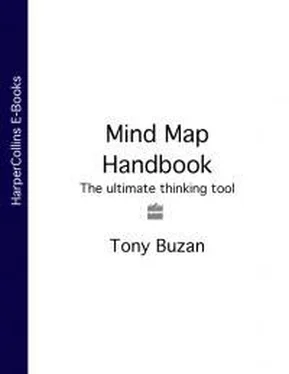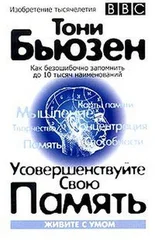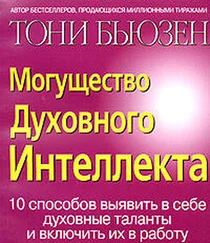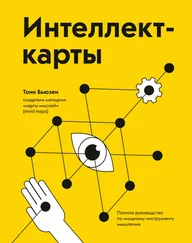3. Get Yourself Another Instrument
Go into a music shop and browse. Consider buying yourself a simple musical instrument such as a tin whistle or a set of bongo drums. Didgeridoos are very popular. So too are guitars and keyboards.
Consider also expanding your own mental library of tunes, while at the same time increasing the sophistication of your musical-instrument-ear, by listening to music from different countries. You will soon realize how incredibly musically creative the whole world is. This will reinforce your awareness that everyone is musical, and that the forms of creative musical expression are infinite.
At the beginning of the year, Professor Zander welcomes his musical students, to their study course and announces, with appropriate musical rhythm and emphasis, that he already knows the marks they are going to receive at the end of the year.
As the students all listen intently, he announces joyfully: ‘You are all going to get an “A!”’ Professor Zander then adds: ‘I guarantee that you are going to get an “A”. Part of you getting that “A” will be that in the next two weeks you write me a comprehensive letter. You will imagine yourself having just graduated with a first-class degree in Creative Musicianship, and you will write in that letter why it was you were given an “A”; how many hours practice you put in; what your goals were and how you achieved them; what mistakes you made and how you corrected them; what advice you took and how you applied it; what major lessons-for-life you learnt along the way; and how you are further going to advance your studies and career now that you have your first-class degree.’
Every student does as asked. Every student, having committed to the plan of action, follows it through, and every student achieves, and deserves, an ‘A’.
4. Expand Your Boundaries
You should realize that what you think creates your reality and your boundaries. If you think that you can’t sing or play a musical instrument, you will not be able to. Your boundaries will be absolute. However, if you think that you can sing and that you have the potential to play something, you will be able to. Your boundaries will become infinite.
This principle is demonstrated most emphatically by the brilliant founder and conductor of the Boston Philharmonic Orchestra, Professor Benjamin Zander. Professor Zander has a unique and profoundly effective approach to the teaching of Creative Musicianship to advanced musical students.
Write yourself a similar note on how you are going to develop your Creative Musicianship!
5. Remind Yourself that you are a Creative Musician
Constantly remind yourself that you are a Creative Musician. Whenever you hear birds sing, remember that they learnt by copying and persistence. Whenever you walk or run similarly remember that you are playing ‘Body Music’. Whenever you fidget or tap your fingers impatiently, realize that you are a percussionist! Every time you speak or have a conversation with a friend, remember that you are singing, often in duets and quartets.
When you get really mad over something, and start pounding the table, stamping your feet in time to the words that you are yelling (in a rising crescendo and with the rhythm punctuating perfectly your body movements), remember that every word was precisely as you wanted it; enunciated in exactly the way you wished; spoken at the precise volume you intended to maximum effect; pounded out at the precise beat and rhythm you desired; and controlled precisely in terms of pitch, content, syncopation and volume!
In other words, you were singing! And if Beethoven had been working with you, creating an entire crescendoing orchestra of brass, woodwind and strings, you would have been singing, perfectly , an original operatic aria! (Perhaps entitled I Genitore Furioso or The Irate Parent!)
6. Create Musical Opportunities
Now that you know you are a Creative Musician, take every opportunity to express your Creativity. Go to sporting events where you can sing the club songs, or national anthems. Go to Karaoke bars, and don’t just sit and listen – get up and sing! No matter how bad you may think your first attempts are, persist and they will get better.
In clubs or at parties, sing along with the music being played. When you are at home sing along (or play along) with the radio, or your CDs, or join in with TV theme tunes.
If you have young children, have a musical ‘jamming’ session with them, with anything that can make musical sounds (keys, saucepans, wooden spoons, etc). The children will love it, and you will too.
7. Consider Taking Music Lessons
The simple rule for finding a teacher in this instance is to find one who:
is qualified and practises well whatever instrument you are going to learn
believes absolutely that you can learn whatever form of music you wish to learn, and will approach the task with energy, enthusiasm and a positive attitude.
Alternatively, try joining a local, friendly music group or bunch of singers. You will find the experience rewarding, uplifting and life-changing.
8. Pass on the Good News!
Now that you know the truth about the natural creative musicality of everyone, spread the good news!
If any of your friends or colleagues comes up with the old arguments about how they are not being musically creative, use the information you have learnt here to help them out of their lonely, monotonous and songless prisons. As you do, you will be surrounded increasingly by more and more singing, dancing and playing musicians. This will in turn make the whole of your life more of a symphony!
The ideas in this chapter are summarized in Plate 20.
3.6
Creativity Productivity – The Power of Volume and Speed
Fluency in Creative Thinking refers to the number of ideas that you can create, and the speed at which you create them. Fluency is one of the main goals of all Creative Thinkers and of all the great geniuses.
This goal can itself create a problem – that of quality. What happens to the quality of your creative ideas if you start to speed up your thinking and generate greater numbers of ideas? Does the quality go down, stay the same, or go up?
The answer, surprisingly (and mercifully!) is that as the quantity and speed of the ideas goes up, the overall quality of ideas goes up too.
In other words, in Creative Thinking, you can have your cake and eat it too!
Let’s take a look at the great Creative Thinkers, and see how this process worked for them. The sheer volume and productivity of some of these great thinkers is astounding:
Marie Curie– this great scientist was not just awarded one Nobel Prize, but two – and in two different subjects as well, physics and chemistry. Her work ranged over the fields of magnetism, radioactivity and the development of the medical uses of x-rays, and she isolated the chemical elements radium and polonium
Leonardo da Vinci– created so many ideas in so many different fields, that no one has yet counted them all!
Charles Darwin– the creator of the Theory of Evolution not only wrote his 1,000+ page book on this subject; he wrote 119other scientific papers, books and booklets
Thomas Edison– registered 1,093original patents, which is still the world record for the greatest number of patents registered by one person. He also completed 350notebooks of work and ideas
Albert Einstein– in addition to his masterful treatise on Relativity, Einstein published over 240other scientific papers
Читать дальше












